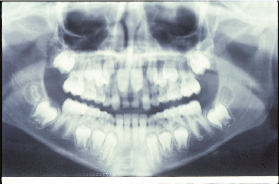Braces certainly complicate things when it comes to the food you eat, but no matter if you have braces or not, there are many foods that are good for your teeth and many that are not so good.
Tooth decay is ultimately caused by acid eating away at the enamel of your teeth. Orthodontists and dentists will always tell you to brush and floss in order to reduce the amount of plaque buildup on your teeth. Plaque is a layer of bacteria that accumulates on the surface of your teeth. That bacteria then produces acid, which is what causes decay.
Many of the worst foods for your teeth are those that stick to or get stuck between your teeth, and those that contain sugar. Both kinds of food will attract bacteria, which jump-starts the process described above.
The best foods are the ones that either fortify the minerals in your teeth, those that encourage the production of saliva to wash away bacteria, and those that can actually help to remove food particles from your teeth.
Let’s look at a few of the best and the worst, as suggested by a prominent dental school:
Good for your teeth:
Fiber-rich fruits and vegetables are said to have a detergent-like effect in your mouth, and they promote saliva flow. Both of these effects help to clean and fortify teeth.
Cheese, milk, plain yogurt, and other dairy products generate saliva and are good sources of calcium.
Green and black teas both contain polyphenols that either kill or suppress bacteria.
Sugarless chewing gum is a good saliva generator that also removes food particles from your teeth.
Foods with fluoride like fluoridated drinking water help teeth by washing away bacteria and by adding fluoride.
Bad for your teeth:
Sticky candies and sweets stay in your mouth longer and contain loads of sugar.
Starchy foods like soft bread and potato chips can get stuck in your mouth or between teeth.
Carbonated soft drinks contain tons of both sugar and acid, making them extremely harmful to teeth.
In addition to paying closer attention to your diet, good oral hygiene like brushing and flossing is always the best way to prevent tooth decay whether you have braces or not.
For more information about taking care of your teeth before, during, or after an orthodontic treatment like braces, contact orthodontist Dr. Frost either online or by calling (314) 567-1888. We look forward to assisting you with braces in Creve Coeur.


